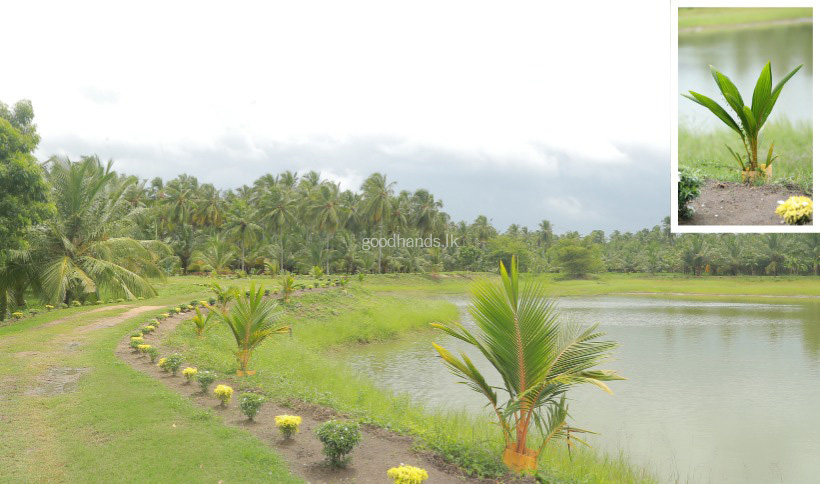Water is an absolutely necessary factor for planting coconuts. A grown coconut tree needs about 40-60 litres and a plant needs about 10-15 litres per day. Based on the annual rain fall the coconut yield fluctuates. Conservation of wetness is important to conserve water during the dry season in order to obtain higher yield.
For coconut cultivation preservation of wetness is done in many ways. As indicated earlier, through preservation following could be achieved:
I. Holding water
II. Reducing flow of water
III. Protection from soil erosion
Methods of preservation of wetness
1.Covering the circle of fertilizer In this method from the base of the tree an area of one foot is left and a circular area of six feet radius is covered with straw, coconut fronds, coconut husks, etc. 2. Burying coconut husks and coconut fiber The importance of adding coconut husks is that husks could absorb water six times of its weight. In this sequence water absorbed in rainy season will get released to the soil later. Burying of husks must be carried out at the beginning of the rainy season. Coconut fiber could be used at the pits of coconut husks. Results of coconut husks will run for a period of 5 to 6 years. There are a few main methods of burying ✔️ Having a pit between two coconut trees ✔️ Having a pit for each coconut tree ✔️ Having circular pits beyond the fertilizer circle ✔️ Having trenches between coconut tree lines and burying husks 3.Contoured Drains This method is used to conserve the topsoil in coconut plantations situated on slopes. I addition following too could be used to preserve water: ✔️ Contoured Ridges ✔️ Bio ridges ✔️ Preparation of terraces 4.Covered Plantations Covered plantation is done in large scale lands for preservation of water. For this both creeper/vine plants and bush plants could be used. ✔️ Piyureriya ✔️ Calapogeniyum ✔️ Centroseema ✔️ Siraatro Bush plants ✔️ Glydisiriya |

